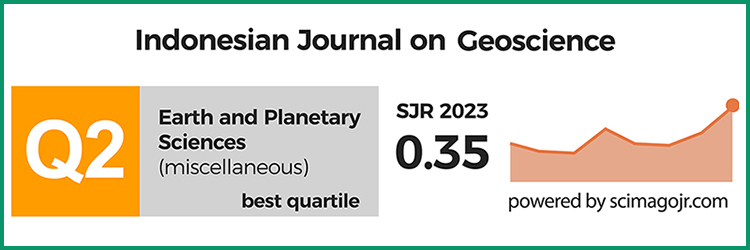Characterization of Carbonate Reservoir Potential in Salawati Basin, West Papua: Analysis of Seismic Direct Hydrocarbon Indicator (DHI), Seismic Attributes, and Seismic Spectrum Decomposition
DOI:
https://doi.org/10.17014/ijog.11.2.173-188Abstract
Carbonate reservoir of Kais Formation in Salawati Basin, West Papua, is the most famous oil and gas reservoir in the eastern part of Indonesian Archipelago since 1970’s. Nowadays, new prospects in this area are more challenging and most relevant near the infrastructure of previous oil and gas fields. In this study, a relatively new seismic dataset was investigated to figure out new prospects in carbonate reservoir rocks in the area of interest. In this preliminary study, where seismic data are not supported by well data, direct hydrocarbon indicator (DHI), seismic attribute, and spectral decomposition (CWT: continuous wavelet transform) allow the authors to characterize the reservoir geometry and to predict pore fluids within the reservoir rocks. The reservoir geometry of carbonate reef of Kais Formation (C1) was identified by seismic reflectors with high amplitude contrast at the top C1. The hydrocarbon indicator was predicted by DHI where dim spots, flat spots, and polarity reversals are indicative of hydrocarbon prospects. From the attribute analysis, the attribute instantaneous amplitude detected the top carbonate C1, whereas pore fluids were predicted from high sweetness attribute. In addition, spectral decomposition CWT method confirms the top C1, identified as saturated rock by the frequency of 10 Hz, 20 Hz, and 30 Hz. Based on a seismic study in the researched area, the target zone is expected to be a very promising hydrocarbon reservoir, specifically a carbonate reservoir. As a result, the preferred well-test location is in a region with access to the Kais Formation limestone reef layer. This study can assist in reservoir characterization, especially in areas with limited well control.



















